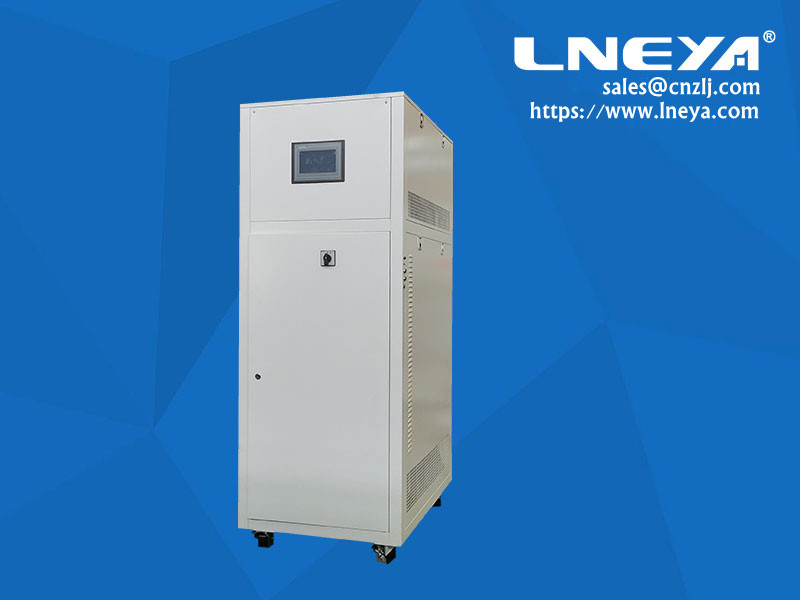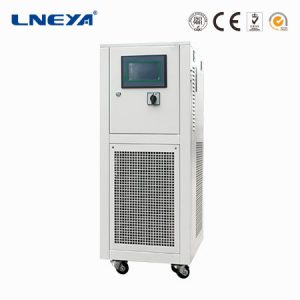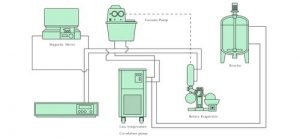What are the common connection methods for industrial chillers?

There are several connection methods for industrial chillers, which are suitable for pipe connection under different conditions.
First, welding connection
Welding is the most important and widely used connection method in pipeline engineering. Welding connection is a direct and fixed connection between pipe sections; it is commonly used in large-diameter steel pipes, high-temperature and high-pressure pipes, overhead steel pipes, buried or laid in trenches, etc. . It has obvious advantages such as high strength and tightness of the interface, omission of fillers and joint accessories, fast construction speed, and no limitation of pipe diameter; but it also has the advantages of non-disassembly, complex interface operation technology, and welding equipment and welder cooperation during construction. And other shortcomings.
Second, threaded connection
Threaded connection (also called threaded connection), it is suitable for pipes with small working pressure and small nominal diameter (dn≤32mm), as well as the connection of pipes with threaded valves, instruments, and equipment. When connecting, the joint should be smeared with filler prepared by lead oxide and glycerin, and evenly spread on the thread of the pipe thread (do not apply in the valve), or use PTFE plastic tape as the filler. The filler shall not protrude into the pipe to avoid reducing the pipe. On the end face, it is strictly forbidden to replace the filler with white painted hemp wire, and the wire connection must be tightened once, and shall not be returned or loosened.
Third, flange connection
Flange connection is to add gaskets (materials) to a pair of flange plates fixed on two pipe fittings, and then tighten them with bolts to connect them into a detachable whole. It has high connection strength, good sealing performance, convenient disassembly, and standardization of production. Therefore, it is widely used in equipment connections between pipes and flanged pipe fittings or flange interfaces, pipes and flange valves, and pipes. The location that needs to be disassembled and overhauled. During installation, a rubber plate gasket with a thickness of 4mm should be placed in the notch. The gasket shall not have uneven thickness, bevel or notch.
Подведите итоги
We at LNEYA will make a specific analysis according to the customer’s specific working conditions. If you have equipment requirements or equipment problems, please contact us sales@lneya.com
Похожие рекомендации
-
Where will the reactor be used? How about the reactor temperature control system?
893Generally, non professionals should be confused about the reactor. The reactor is composed of reactor body, reactor cover, jacket, agitator, transmission device, shaft seal device, support, etc. It is generally understood as a container with physi...
Посмотреть детали -
Causes and troubleshooting of low-temperature water chillers for photoetching machines
920The operator of the low-temperature chiller for lithography machine can have a certain understanding of the related faults and solutions during the operation of the equipment, so as to better use the low-temperature chiller for lithography machine...
Посмотреть детали -
How to choose the accessory pump in the new energy vehicle battery test?
961New energy vehicle battery testing plays a more important role in the development of new energy vehicles. In the operation process, the pump is the key supporting equipment in the LNEYA test equipment, which is also concerned by people. So how to ...
Посмотреть детали -
Low-temperature coolant circulation pump used with rotary evaporator
1302The chemical and pharmaceutical fields are the largest end consumer markets for cryogenic coolant circulation pumps. With the increasing demand for low-temperature coolant circulation pumps in this market, the application of cryogenic pumps in the...
Посмотреть детали
 LNEYA Промышленные чиллеры Производитель Поставщик
LNEYA Промышленные чиллеры Производитель Поставщик













